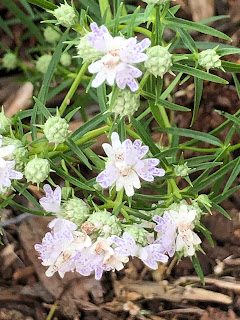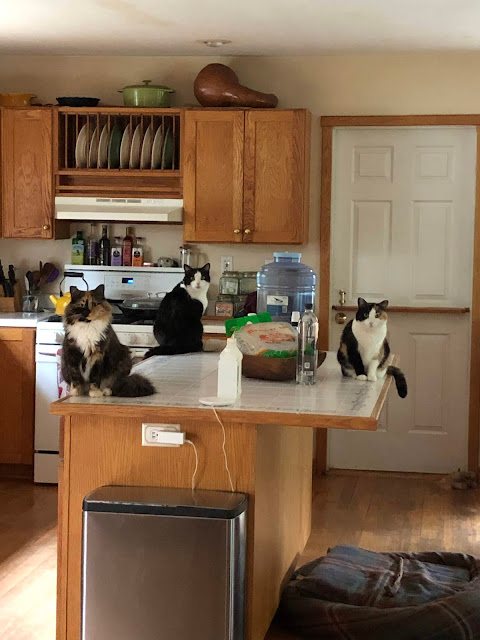I ended up with some fun photos this week of the curiosity of cats who live with us on November Hill. It’s been a long time since I highlighted them here, so let me introduce you (again, if you’ve read here for awhile) to them.
Here’s Mystic, our senior cat, on the table taking a late afternoon siesta. Mystic is our death-defying sweet pea. He survived cytauxzoonosis, a tick-borne disease vectored by bobcats; congestive heart failure; and panleukopenia. Each of those things resulted in ICU stays at our local vet school hospital, and he was incredibly sick each time. Thankfully he’s a survivor and with great care he’s very healthy today at age 13.
Underneath the table, exposing her belly, is Isobel. She’s one of two kittens we got from the local animal shelter. We weren’t told that the shelter had recently had a huge panleukopenia break out with many cats and kittens dying. Isobel was likely the carrier who brought it into our home. Our cats had been vaccinated as kittens, but only one out of four remained healthy after exposure to Isobel and Violet. Pippin, Mystic, and sweet Osage all became critically ill and Osage died. Lesson learned - if bringing kittens into the home, make sure you update panleukopenia first for your other cats.
This is Pixie. (Thanks to my daughter for this lovely photo!) Pixie contracted cytaux at the same time Mystic did and was in the ICU “bed” right next to him. Thankfully she too survived that! She’s also the one cat who did NOT get panleukopenia. She’s Pippin’s full sister and she’s a petite calico sweetheart.
Here are, from left to right, Isobel, Pippin, and Pixie. As you can see, Isobel grew up to be quite a fluff-budget. She is the one cat of our current five who gets along well with all. She adores Pippin, is best friends with Pixie, likes Mystic, and remains a close playmate with Violet, her nearly same aged pal from the shelter.
Here you see Violet on the floor, and Isobel has cozied up to Pippin. Violet is such a sweetie. She’s the cat who gets picked on by Pippin and Pixie, is not well liked by Mystic, but plays daily with her pal Isobel. Violet is also completely unconcerned about the dogs and their wild play, especially one large golden retriever who can be a bit, shall we say, invasive of space.
The cats used to be allowed to go outside the back yard onto the entire farm. After we lost our beloved cat Dickens to what we think was a coyote, and when we learned the hard way that our county is a hot spot for cytauxzoonosis in the US, we cat-proofed our back yard, our front porch, and had a tunnel built so the cats can go around from one to the other. They use the same pet door the dogs use and have the entire upstairs of our house gated from the dogs, so while they had to give up the greater outdoors, they can still enjoy the porch, the back yard, and the back deck.
They’re safer now, as is the wildlife on November Hill, but even contained as they are, they manage to capture insects, lizards, small snakes, the occasional bird, and once, regrettably, an adorable flying squirrel. Cats are definitely predators!
I’ve had cats since I can remember, the first a big orange tomcat named Freckles. Over the years I’ve lived with and loved a series of cats - all beloved, all bring memories of love and joy. It’s a pleasure living with this particularly group.


















